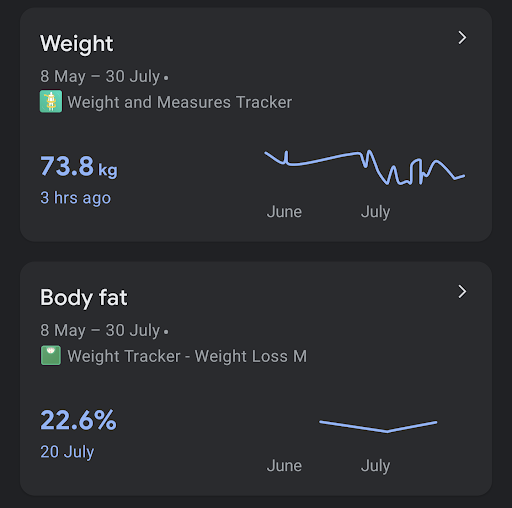In today's fast-paced world, staying fit and maintaining a healthy lifestyle has become a top priority for many individuals. Fortunately, advancements in technology have made it easier than ever to track and monitor our health and fitness goals. Two giants in the tech industry, Google and Apple, have recognized the importance of health and fitness and have developed their respective platforms, Google Fit and Apple Health, to help users lead healthier lives. In this blog post, we will delve into the exciting world of health tracking, exploring the seamless integration between Google Fit and Apple Health, empowering users with a unified approach to their well-being.
Understanding Google Fit and Apple Health:
Google Fit and Apple Health are health and fitness tracking platforms developed by Google and Apple, respectively. Both platforms serve as a centralized hub for users to monitor their physical activity, nutrition, and overall health data. Whether it's counting steps, tracking heart rate, or monitoring sleep patterns, these apps aim to simplify health tracking and encourage users to make informed decisions about their well-being.
The Benefits of Integration:
While Google Fit and Apple Health cater to users of their respective ecosystems, the real magic happens when they integrate seamlessly. With an increasing number of individuals owning devices from both tech giants, the need for cross-platform integration has become evident. The integration allows users to access their health and fitness data from any device, be it an Android phone or an iPhone, providing a comprehensive picture of their progress.
Steps to Integrate Google Fit and Apple Health:
Integrating Google Fit and Apple Health is a straightforward process. For Android users with
Google Fit, they can enable synchronization with Apple Health by navigating to the settings within the Google Fit app. Similarly, Apple Health users can integrate with Google Fit by enabling the sharing of data through the Health app settings on their iPhones.
Unifying Your Health Data:
One of the most significant advantages of integrating Google Fit and Apple Health is the unified health data view. Users no longer have to switch between apps to see their activity, exercise, and health data. A holistic view of one's progress can lead to better-informed decisions and more effective goal tracking.
Leveraging Third-Party Apps:
The integration between Google Fit and Apple Health also opens up a world of possibilities through third-party apps. Many fitness apps now offer integration with both platforms, allowing users to pick and choose the apps that best suit their needs. Whether it's a specialized nutrition app or a meditation app, users can expand their health journey through diverse offerings.
Tracking Your Wellness Anywhere, Anytime:
With the seamless integration of Google Fit and Apple Health, users can track their wellness on the go, without being limited by the device they carry. Whether they switch between an Android phone and an iPhone or use multiple devices interchangeably, their health data stays in sync and up to date.
The combination of Google Fit and Apple Health integration has redefined the health tracking landscape. By bridging the gap between two major platforms, users can now access their health and fitness data more conveniently and accurately. This unified approach to wellness empowers individuals to take charge of their health and make positive lifestyle changes, regardless of their device preferences. So, if you're looking to elevate your health tracking game, consider integrating
Google Fit and Apple Health to experience the perfect duo of health and fitness tracking!



Comments